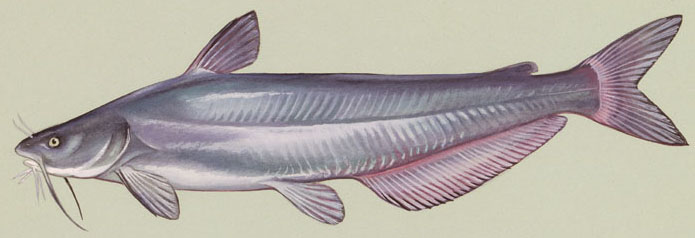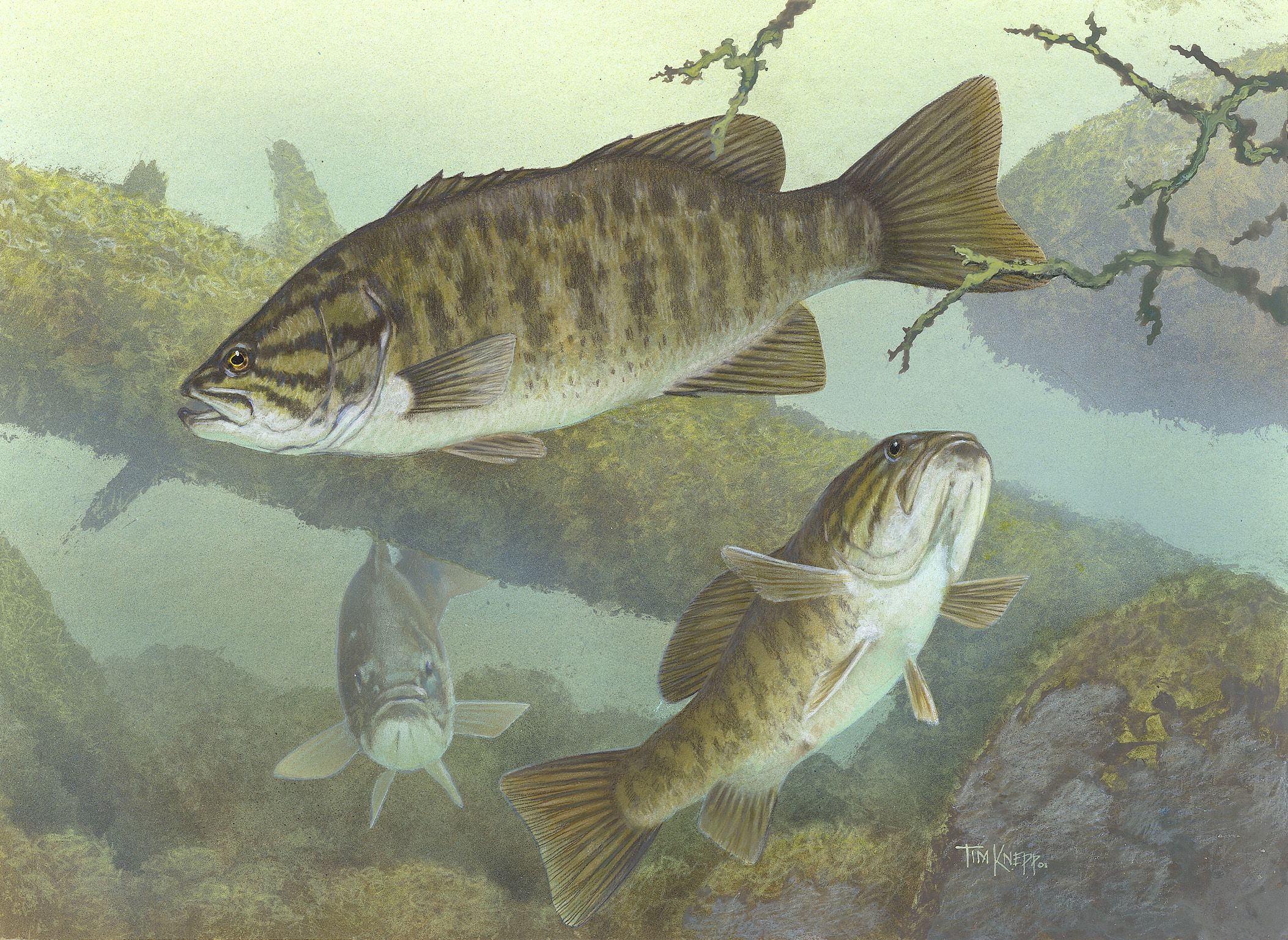|
Lake Mohawk (Ohio)
Lake Mohawk is a private reservoir located about south of Malvern, Ohio, USA and east of Waynesburg, Ohio. It resides in Brown Township and Harrison Township. The lake is relatively small, being a private lake containing of water with a maximum depth of . There is only one place to put in boats, however, there are 13 community access docks that can hold boats. The lake is formed by Lake Mohawk Dam across Middle Run, a tributary of Sandy Creek. The lake is fed by a series of springs and rain water runoff. Flora The flora contained in the lake mostly amounts to Spirogyra and Curly-leaf Pondweed. Also in fall and winter months it may contain Scenedesmus and Microcystis. The weed coverage is Leafy Pondweed, Naiad, Eurasian Watermilfoil, and Sago Pondweed. Fauna Some types of fish that reside in the lake are Largemouth and Smallmouth bass, Crappie, Yellow perch, Bluegill, Walleye, sunfish, and 2 varieties of catfish, Mud Catfish and Blue catfish. There is also a no-rel ... [...More Info...] [...Related Items...] OR: [Wikipedia] [Google] [Baidu] |
Brown Township, Carroll County, Ohio
Brown Township is one of the fourteen townships of Carroll County, Ohio, United States. As of the 2020 census the township had a population of 7,214. Geography Located in the northwestern corner of the county, it borders the following townships: * Paris Township, Stark County - north * West Township, Columbiana County - northeast corner * Augusta Township - east * Washington Township - southeast corner * Harrison Township - south * Rose Township - southwest * Sandy Township, Stark County - west * Osnaburg Township, Stark County - northwest Two incorporated villages are located in Brown Township: Malvern in the center, and part of Minerva in the northeast. The unincorporated community of Lake Mohawk, a census-designated place, is in the southwest part of the township, and Pekin, another unincorporated community and census-designated place, is in the northeast part, next to Minerva. Ohio State Route 43 passes through the township, leading west then north from Malvern to the ce ... [...More Info...] [...Related Items...] OR: [Wikipedia] [Google] [Baidu] |
Reservoirs In Ohio
A reservoir (; from French ''réservoir'' ) is an enlarged lake behind a dam. Such a dam may be either artificial, built to store fresh water or it may be a natural formation. Reservoirs can be created in a number of ways, including controlling a watercourse that drains an existing body of water, interrupting a watercourse to form an embayment within it, through excavation, or building any number of retaining walls or levees. In other contexts, "reservoirs" may refer to storage spaces for various fluids; they may hold liquids or gasses, including hydrocarbons. ''Tank reservoirs'' store these in ground-level, elevated, or buried tanks. Tank reservoirs for water are also called cisterns. Most underground reservoirs are used to store liquids, principally either water or petroleum. Types Dammed valleys Dammed reservoirs are artificial lakes created and controlled by a dam constructed across a valley, and rely on the natural topography to provide most of the basin ... [...More Info...] [...Related Items...] OR: [Wikipedia] [Google] [Baidu] |
Malvern High School (Ohio)
Malvern High School is a public high school in Malvern, Ohio, United States. It is the only high school in the Brown Local School District. Sports teams are called the Hornets, and they compete in the Ohio High School Athletic Association as a member of the Inter-Valley Conference The Inter-Valley Conference is an Ohio High School Athletic Association (OHSAA) athletic league made up of 14 schools from Carroll, Coshocton, Holmes, Stark, Guernsey and Tuscarawas counties. The conference underwent a major change at the st .... School Board Members * Tammie Hulit, President * Chad Browning, Vice President * Tara Bowe, Member * Dechelle Thompson, Member * Rob Ruegg, Member Facility Construction of the school building began in October 2014. The 112,000 square foot building features a two-story academic wing that will be home to the entire student population, yet keep the elementary, middle and high school students segregated. Common spaces include two gymnasiums, media cente ... [...More Info...] [...Related Items...] OR: [Wikipedia] [Google] [Baidu] |
Brown Local School District
Brown Local Schools is a school district located in Carroll County, Ohio, United States. The only high school for the district is located in Malvern, Ohio and is called Malvern High School. See also *List of school districts in Ohio This is a list of school districts in the U.S. state of Ohio, sorted by the name of school district. Districts will often shorten their names; for example, Sandy Valley Local School District is often referred to as Sandy Valley Schools. District ... References External links * Education in Carroll County, Ohio School districts in Ohio {{CarrollCountyOH-school-stub ... [...More Info...] [...Related Items...] OR: [Wikipedia] [Google] [Baidu] |
Esox
''Esox'' is a genus of freshwater fish commonly known as pike or pickerel. It is the type genus of the family Esocidae. The type species of the genus is '' Esox lucius'', the northern pike. ''Esox'' has been present in Laurentia (which later became North America) and Eurasia since the Paleocene. Modern large pike species are native to the Palearctic and Nearctic realms, ranging across Northern America and from Western Europe to Siberia in North Asia. Pikes have the elongated, torpedo-like shape typical of predatory fishes, with sharply pointed heads and sharp teeth. Their coloration is typically grey-green with a mottled or spotted appearance with stripes along their backs, providing camouflage among underwater weeds, and each individual pike marking patterns are unique like fingerprints. Pikes can grow to a maximum recorded length of , reaching a maximum recorded weight of . Etymology The generic name ''Esox'' (pike fish) derives from the Greek ἴσοξ (''ee-so ... [...More Info...] [...Related Items...] OR: [Wikipedia] [Google] [Baidu] |
Blue Catfish
The blue catfish (''Ictalurus furcatus'') is the largest species of North American catfish, reaching a length of and a weight of . The typical length is about 25–46 in (64–117 cm). The fish can live to 20 years. The native distribution of blue catfish is primarily in the Mississippi River drainage, including the Missouri, Ohio, Tennessee, and Arkansas Rivers, The Des Moines River in South Central Iowa, and the Rio Grande, and south along the Gulf Coast to Belize and Guatemala. These large catfish have also been introduced in a number of reservoirs and rivers, notably the Santee Cooper lakes of Lake Marion and Lake Moultrie in South Carolina, the James River in Virginia, Powerton Lake in Pekin, Illinois, and Lake Springfield in Springfield, Illinois. This fish is also found in some lakes in Florida. The fish is considered an invasive pest in some areas, particularly the Chesapeake Bay. Blue catfish can tolerate brackish water, thus can colonize along inland wat ... [...More Info...] [...Related Items...] OR: [Wikipedia] [Google] [Baidu] |
Ameiurus
''Ameiurus'' is a genus of catfishes in the family Ictaluridae. It contains the three common types of bullhead catfish found in waters of the United States, the black bullhead (''Ameiurus melas''), the brown bullhead (''Ameiurus nebulosus''), and the yellow bullhead (''Ameiurus natalis''), as well as other species, such as the white catfish (''Ameiurus catus'' or ''Ictalurus catus''), which are not typically called "bullheads". The species known as bullheads can be distinguished from channel catfish and blue catfish by their squared tailfins, rather than forked. Taxonomy and fossil record ''Ameiurus'' is recognized as monophyletic, meaning it forms a natural group. It is mostly closely related to the clade formed by the genera '' Noturus'', '' Prietella'', ''Satan'', and '' Pylodictis''. There is a sister group relationship between the species ''A. melas'' and ''A. nebulosus''. Species Extant Species There are currently seven recognized species in this genus: * '' Am ... [...More Info...] [...Related Items...] OR: [Wikipedia] [Google] [Baidu] |
Centrarchidae
Centrarchidae, better known as sunfishes, is a family of freshwater ray-finned fish belonging to the order Perciformes (formerly belonging to the deprecated order Centrarchiformes), native only to North America. There are eight universally included genera within the centrarchid family: '' Lepomis'' (true sunfishes), '' Micropterus'' (black basses), ''Pomoxis'' (crappies), '' Enneacanthus'' (banded sunfishes), ''Centrarchus'' (type genus, consisting solely of the flier ''C. macropterus''), ''Archoplites'' ( Sacramento perch), '' Ambloplites'' (rock basses), and ''Acantharchus'' ( mud sunfish). A genetic study in 2012 suggests that the highly distinct pygmy sunfishes of the genus '' Elassoma'' are also centarchids. The centrarchid family comprises 38 identified species, 34 of which are extant. It includes many popular game fishes familiar to North American anglers, such as the rock bass, largemouth bass, bluegill, pumpkinseed, green sunfish and crappies. Most sunfis ... [...More Info...] [...Related Items...] OR: [Wikipedia] [Google] [Baidu] |
Walleye
The walleye (''Sander vitreus'', synonym ''Stizostedion vitreum''), also called the yellow pike or yellow pickerel, is a freshwater perciform fish native to most of Canada and to the Northern United States. It is a North American close relative of the European zander, also known as the pikeperch. The walleye is sometimes called the yellow walleye to distinguish it from the blue walleye, which is a color morph that was once found in the southern Ontario and Quebec regions, but is now presumed extinct. However, recent genetic analysis of a preserved (frozen) 'blue walleye' sample suggests that the blue and yellow walleye were simply phenotypes within the same species and do not merit separate taxonomic classification. In parts of its range in English-speaking Canada, the walleye is known as a pickerel, though the fish is not related to the true pickerels, which are members of the family ''Esocidae''. Walleyes show a fair amount of variation across watersheds. In general, ... [...More Info...] [...Related Items...] OR: [Wikipedia] [Google] [Baidu] |
Bluegill
The bluegill (''Lepomis macrochirus''), sometimes referred to as "bream", "brim", "sunny", or "copper nose" as is common in Texas, is a species of North American freshwater fish, native to and commonly found in streams, rivers, lakes, ponds and wetlands east of the Rocky Mountains. It is the type species of the genus '' Lepomis'' (true sunfish), from the family Centrarchidae (sunfishes, crappies and black basses) in the order Perciformes ( perch-like fish). Bluegills can grow up to long and about . While their color can vary from population to population, they typically have a very distinctive coloring, with deep blue and purple on the face and gill cover, dark olive-colored bands down the side, and a fiery orange to yellow belly. They are omnivorous and will consume anything they can fit in their mouth, but mostly feed on small aquatic insects and baitfishes. The fish are important prey for bass, other larger sunfish, northern pike and muskellunge, walleye, t ... [...More Info...] [...Related Items...] OR: [Wikipedia] [Google] [Baidu] |
Yellow Perch
The yellow perch (''Perca flavescens''), commonly referred to as perch, striped perch, American perch, American river perch or preacher is a freshwater perciform fish native to much of North America. The yellow perch was described in 1814 by Samuel Latham Mitchill from New York. It is closely related, and morphologically similar to the European perch (''Perca fluviatilis''); and is sometimes considered a subspecies of its European counterpart. Other common names for yellow perch include American perch, coontail, lake perch, raccoon perch, ring-tail perch, ringed perch, and striped perch. Another nickname for the perch is the Dodd fish. Latitudinal variability in age, growth rates, and size have been observed among populations of yellow perch, likely resulting from differences in day length and annual water temperatures. In many populations, yellow perch often live 9 to 10 years, with adults generally ranging from in length. The world record yellow perch (; ) was caught in M ... [...More Info...] [...Related Items...] OR: [Wikipedia] [Google] [Baidu] |

.png)

.jpg)



.jpg)